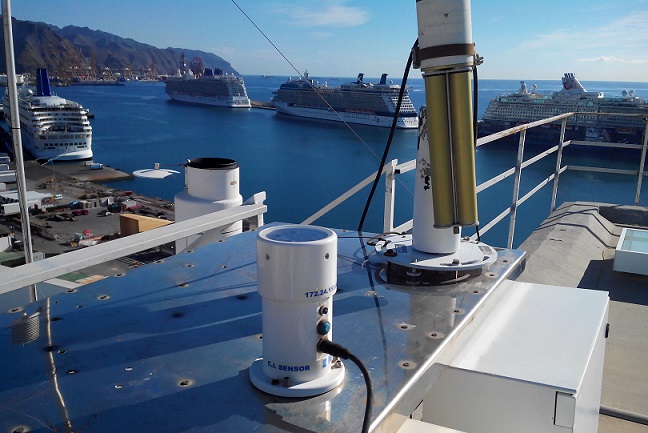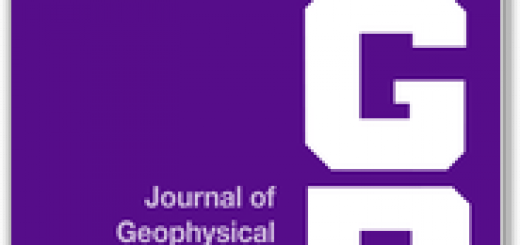“A new zenith looking narrow-band radiometer based system (ZEN) for dust Aerosol Optical Depth monitoring” paper published in AMTD.
![]()
There are currently extensive networks of ground-based sun-photometers all over the world dedicated to aerosols monitoring. These networks are integrated by very precise instruments, close to the 0.02 aerosol optical depth (AOD) accuracy in the visible spectral range suggested as a goal by the World Meteorological Organization (WMO). However, there is a lack of stations in desert regions in the Northern Hemisphere, which are the most important source of mineral dust, mainly due to the high cost of these sophisticated sun-photometers, the needed of trained staff to operate them and the power consumption in remote areas and developing countries. The consequence of this lack of information is the unsatisfactory description of dust cycles.
This study presents a new zenith looking narrow-band radiometer based system (ZEN), conceived for dust AOD monitoring. This ZEN system comprises a new radiometer (ZEN-R41), which measures downwelling zenith sky radiance (ZSR) at four channels (870, 675, 500 y 440 nm), and a methodology for AOD retrieval (ZEN-LUT). The ZEN-R41 radiometer (Fig. 1) has been designed to be stand-alone and without moving parts, making it a low-cost, robust and automated instrument with lower maintenance than classical sun-photometers, appropriated to be deployed in remote and unpopulated desert areas. The ZEN-LUT method is inspired by previous methodologies commonly applied to on-board satellite sensors, uses a radiative transfer code to simulate the ZSRs and the associated AODs. This method has been developed using information from Cimel-AERONET sun-photometers.

Fig. 1: The ZEN-R41 radiometer measuring next to an AERONET-Cimel photometer at santa Cruz de Tenerife station (SCO)
The results of this preliminary study, carried out at Izaña, Santa Cruz and Tamanrasset (Argelia) stations, indicated that the ZEN-LUT method is appropriate to infer dust AOD from ZSR ZEN-R41 measurements. The comparison between AOD retrieved using the ZEN-LUT (CE318-LUT) and AERONET data (CE318-AERONET) showed correlations (R2) ranging from 0.99 for Santa Cruz to 0.95 for Tamanrasset, and root mean square errors (RMSE) ranging from 0.010 at Izaña to 0.035 at Tamanrasset (Fig. 2 for 440 nm channel).

Fig. 2: AOD scatterplot at 440 nm between CE318-AERONET and CE318-LUT for Izaña (a), Santa Cruz (b) and Tamanrasset (c) stations in 2013 for 20°<SZA<65° (a, b, c). The black solid lines are the least-square fits, and the dashed lines are the diagonals (y=x). The least-square fit parameters are shown in the legend (slope, intercept, correlation coefficient (R) and number of data (N)). AOD difference in 440 nm between CE318-AERONET and CE318-LUT respect to CE318-AERONET (d, e, f) and SZA (°) (g, h, i), respectively. Extracted from Almansa et al., 2016.
Our results suggest that ZEN is a suitable system to fill the current observational gaps and to complement observations performed by sun-photometer networks in order to improve mineral dust monitoring in remote locations, where it is difficult to deploy sun-photometers for logistical reasons and poor infrastructure. As a consequence, this instrument could play a key role in dust model data assimilation in near dust source regions, satellite validation and early warning within the WMO Sand and Dust Storm Warning Advisory and Assessment System (SDS WAS).
Further details about this study can be found at the on-line paper:
Almansa, A. F., Cuevas, E., Torres, B., Barreto, Á., García, R. D., Cachorro, V. E., de Frutos, Á. M., López, C., and Ramos, R.: A new zenith looking narrow-band radiometer based system (ZEN) for dust Aerosol Optical Depth monitoring, Atmos. Meas. Tech. Discuss., doi:10.5194/amt-2016-302, in review, 2016.
The paper can be downloaded at: http://www.atmos-meas-tech-discuss.net/amt-2016-302.







